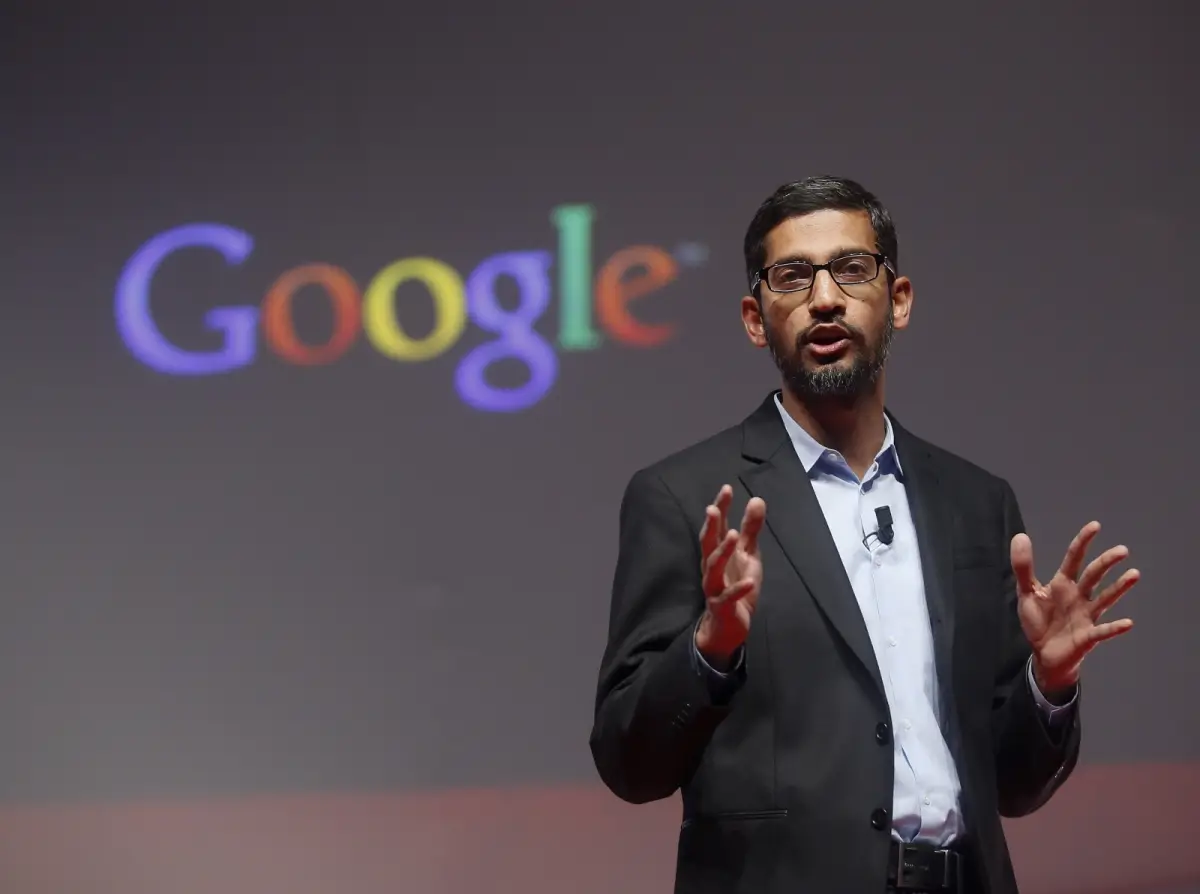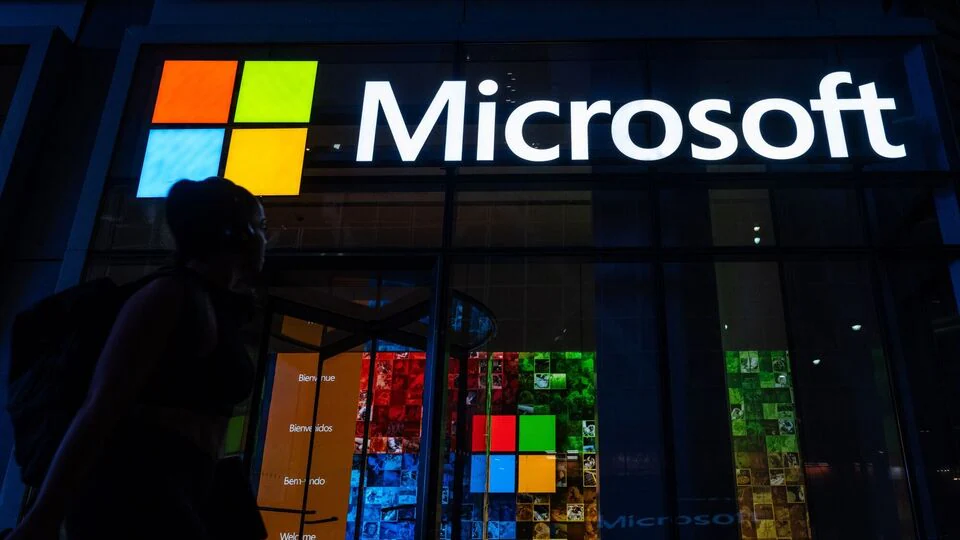US President Donald Trump has delivered a stark message to America’s biggest tech companies: stop hiring overseas workers and start putting Americans first. Speaking at a national AI summit in Washington, Trump specifically called out industry giants like Google, Microsoft, and Apple for building their operations in countries like India while neglecting domestic talent.
This isn’t just political rhetoric it’s a fundamental shift that could reshape how Silicon Valley operates. For decades, tech companies have relied heavily on global talent pools, particularly from India, to fuel their growth and innovation. Now, that strategy faces its biggest challenge yet.

Trump’s comments signal a new era where tech nationalism takes precedence over globalization. The implications stretch far beyond corporate boardrooms, affecting everything from visa policies to the future of artificial intelligence development in America.
The “America First” Tech Agenda
At the AI summit, Trump didn’t mince words about his expectations for the tech industry. He criticized what he called the “globalist mindset” that has dominated Silicon Valley for years.
“Many of our largest tech companies have reaped the blessings of American freedom while building their factories in China, hiring workers in India and stashing profits in Ireland,” Trump stated. “Under President Trump, those days are over.”
The president’s message was clear: winning the global AI race requires American companies to demonstrate “patriotism and national loyalty.” He emphasized that tech firms must be “all in for America” and prioritize domestic hiring over international recruitment.
This shift represents more than just policy preference it’s a complete rethinking of how America’s most valuable companies should operate in an increasingly competitive global landscape.
Three Executive Orders Reshape AI Development
Trump backed up his rhetoric with concrete action, signing three executive orders designed to cement America’s leadership in artificial intelligence while keeping development domestic.
The “Winning the Race” Strategy
The first order outlines a national strategy to accelerate AI development within US borders. This includes fast-tracking the construction of data centers and removing regulatory barriers that could slow down infrastructure development. The goal is simple: make it easier for companies to build AI capabilities domestically rather than overseas.
Eliminating “Woke” AI
The second order targets companies receiving federal funding for AI development. These organizations must now ensure their AI systems remain politically neutral. Trump made it clear his administration won’t support what he termed “woke” AI models, claiming previous diversity and inclusion policies slowed innovation.
“We are getting rid of woke,” Trump declared. “AI must be accurate and not influenced by ideology.”
Boosting AI Exports
The third order focuses on helping American-made AI tools compete globally. It supports the export of US-built AI products while working to reduce dependence on foreign platforms and supply chains. This represents a comprehensive approach to keeping AI development under American control.
India’s Crucial Role in US Tech Operations
To understand the significance of Trump’s directive, it’s essential to recognize how deeply integrated Indian talent has become in American tech operations. For years, US companies have built extensive engineering hubs in cities like Bengaluru and Hyderabad, taking advantage of India’s skilled workforce and cost-effective operations.
The numbers tell the story. In 2024, Indian nationals accounted for nearly 74% of all new H-1B visa approvals the program that allows skilled foreign workers to take jobs in the US. These professionals have become the backbone of many tech operations, from software development to AI research.
Major outsourcing happens at scale too. Companies routinely move software development, cloud support, and data operations to Indian teams as a way to scale efficiently while controlling costs. This model has been so successful that it’s become standard practice across the industry.
The relationship goes beyond simple cost savings. Indian engineers and computer scientists have contributed significantly to breakthrough innovations in AI, cloud computing, and software development. Many of the algorithms and systems powering today’s tech giants were developed, at least in part, by Indian talent.

Potential Industry Pushback and Challenges
Trump’s directive faces significant resistance from an industry built on global collaboration. Tech leaders have consistently argued that limiting access to international talent could seriously hurt innovation and competitiveness.
Research supports these concerns. A Brookings Institution study found that more than half of top AI researchers in the US were foreign-born, with many coming from India and China. Cutting off this pipeline could leave American companies struggling to find the specialized skills needed for cutting-edge AI development.
The talent shortage in tech remains a persistent problem. Despite Trump’s focus on hiring Americans, many companies report difficulty finding qualified candidates for specialized roles in AI, machine learning, and advanced software engineering. Restricting international hiring could exacerbate these shortages.
Cost considerations also play a major role. Bringing operations back to the US or hiring domestically typically costs significantly more than offshore alternatives. For companies under pressure to maintain profitability while investing heavily in R&D, this presents a serious challenge.
Impact on Indian IT Professionals and Companies
The implications for Indian tech workers and companies are substantial. Indian IT professionals already working in the US on H-1B visas face renewed uncertainty, especially given Trump’s previous efforts to restrict skilled immigration during his first term.
For those hoping to move to the US for tech careers, the path may become significantly narrower. Companies may reduce their reliance on H-1B applications or shift their hiring strategies to focus more heavily on domestic candidates.
India’s massive IT services industry including global giants like Infosys, TCS, and Wipro could also face headwinds. If American firms begin shifting more work back to US soil in response to political pressure, these companies may need to adapt their business models significantly.
However, this challenge could also present opportunities. As access to US markets becomes more difficult, Indian companies might accelerate their focus on domestic innovation and other international markets. India’s own growing tech sector could benefit from increased attention and investment.
What Comes Next for Silicon Valley
While Trump hasn’t announced specific policy changes yet, his rhetoric suggests several potential developments. H-1B visa restrictions could become more stringent, making it harder for companies to hire international talent. Government contracts might include requirements for domestic hiring, particularly for AI and defense-related projects.
Companies may need to reassess their global workforce strategies, potentially reducing expansion in India and other offshore locations. This could lead to increased investment in US-based training programs and university partnerships to develop domestic talent pipelines.
The tech industry will likely push back through lobbying efforts and public statements about the importance of global talent for innovation. Some companies might relocate certain operations to countries with more favorable immigration policies, potentially weakening the US tech ecosystem.
Broader Economic and Innovation Implications
Trump’s tech hiring directive reflects broader tensions between globalization and nationalism in the modern economy. While the goal of creating more American jobs is politically popular, the execution could have unintended consequences for US competitiveness.
Innovation often thrives on diverse perspectives and global collaboration. Some of the most successful tech companies have been built by international teams working together across borders. Restricting this collaboration could slow down the pace of innovation, particularly in fast-moving fields like AI.
The directive also raises questions about America’s role in the global tech ecosystem. For decades, the US has attracted the world’s best talent, helping maintain its technological leadership. A more restrictive approach could push top international talent to other countries, potentially strengthening competitors.

Preparing for a New Tech Landscape
The tech industry now faces a fundamental choice: adapt to Trump’s vision of domestic-focused development or find ways to maintain global operations while satisfying political demands for American job creation.
Companies will likely need to invest more heavily in domestic training and education programs. Partnerships with American universities and community colleges could become more important as firms work to develop local talent pipelines. Some may also explore automation and AI tools to reduce overall hiring needs.
For individual tech workers, both American and international, the changing landscape creates new challenges and opportunities. American workers may see more job opportunities, while international professionals may need to explore alternative career paths or focus on opportunities in other countries.
The ultimate test will be whether this new approach can maintain America’s technological edge while creating the domestic jobs Trump has promised. The tech industry’s response and the global market’s reaction will determine whether this represents a successful recalibration or a costly misstep in America’s tech strategy.
As this policy shift unfolds, one thing is certain: the era of unrestricted global hiring in American tech is ending, and a new chapter focused on domestic priorities is beginning.
FAQs: Frequently Asked Questions
1. Why has President Trump asked tech companies to stop hiring in India?
President Trump has directed tech companies to prioritize American workers as part of his broader strategy to bolster domestic employment and reduce reliance on foreign talent in critical sectors like AI and technology.
2. How will this policy affect tech giants like Google and Microsoft?
Companies like Google and Microsoft may need to reevaluate their hiring strategies, invest more in domestic recruitment, and potentially shift focus toward training American workers to meet technological demands.
3. What does this mean for Indian talent in the tech industry?
This policy could limit opportunities for Indian professionals in the U.S. tech sector, pushing them to explore opportunities in other global markets or focus on the growing tech industry in India itself.
4. Is this policy permanent?
The permanence of the policy is uncertain and depends on future administrations and their approach to immigration and employment in the technology sector.
5. How could this change impact innovation in Silicon Valley?
Restricting the global talent pool could hinder access to highly skilled professionals, potentially slowing innovation and growth in Silicon Valley. Companies may need to adapt by finding new ways to foster creativity and expertise domestically.
For More Information Click HERE
